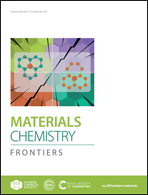Triangularly shaped cyclic defects for the selective boron doping of π-extended systems
Abstract
Boron(III) has recently attracted a substantial increase of interest due to its very specific character that strongly influences structural motifs in which it has been involved. The exploration of boron(III) behaviour is multiaspectal and covers a wide range of, seemingly contradictory fields. Boron(III) has been extensively explored as a catalyst (as a reagent and reactant), but also as a modulator of π-conjugated unsaturated systems. Those aspects assigned to B(III) are based on the electron deficient character of this element that leads to substantial modification of the properties recorded for skeletons with strongly extended delocalization, but also causes Lewis acidity. This influence is derived from a triangular surrounding demanded by the central ion that can also accommodate an additional ligand substantially changing the geometry and the influence on linked atoms. The triangular shape of boron binding sphere requested the environment of predefined organisation of donors in a 'defect' open for the formation of B–X (e.g. X = C, N, P) interaction after forming the final skeleton. This Review/Perspective article shows potential for the controlled formation of specific scaffolds that leave a precisely designed triangular ‘defect’ that is filled with boron(III), showing a substantial influence on the optical properties.

- This article is part of the themed collections: FOCUS: Frontiers in Boron Chemistry and 2022 Materials Chemistry Frontiers Review-type Articles


 Please wait while we load your content...
Please wait while we load your content...